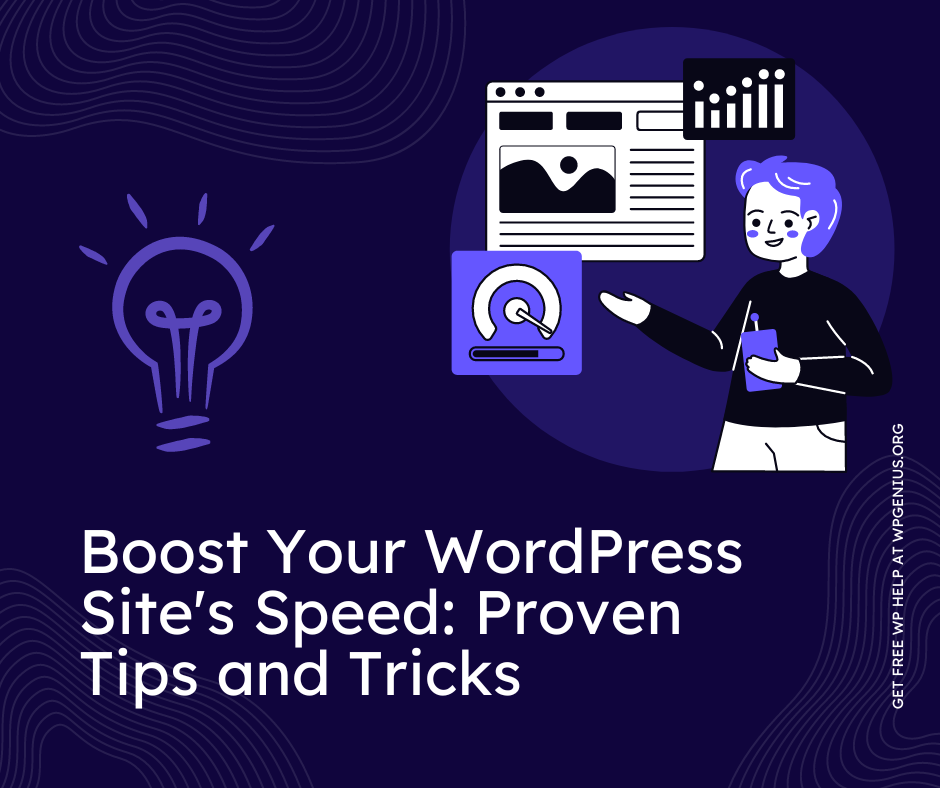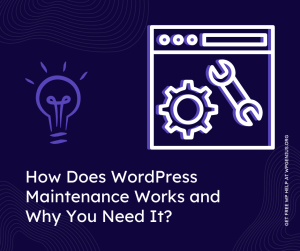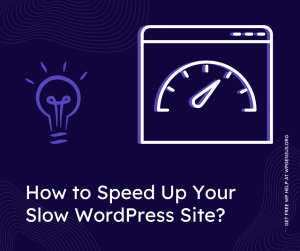Get WordPress fix assistance through ticket portal or email us at [email protected]
Boost Your WordPress Site’s Speed: Proven Tips and Tricks

Your website’s speed is crucial for a number of reasons. For one, it directly impacts your search engine rankings. Google takes page load time into account when ranking sites, so a slow-loading site will likely see a decline in search engine traffic. Additionally, visitors to your site are likely to leave if it takes too long to load, which can negatively impact your bounce rate and conversion rates.
In this post, we’ll discuss a number of ways to speed up your WordPress website, including optimizing images, minifying code, and using a content delivery network. By the end of this post, you’ll have a better understanding of how to improve your site’s speed and performance.
1. Optimize Images
Images can be a major contributor to slow page load times, especially if they’re not properly optimized. There are a few things you can do to optimize your images and improve your site’s speed.
First, make sure to save your images in an appropriate format. JPEG is best for photographs, while PNG is best for graphics and images with fewer colors.
Next, resize your images to the correct dimensions before uploading them to your site. It’s also a good idea to compress your images to reduce their file size. There are a number of free tools available that can help you with this, such as TinyPNG, or Short Pixel.
Finally, make sure to use alt tags for all of your images. Alt tags provide a text description of an image and are used by search engines and screen readers to understand the content of an image. They can also improve your site’s accessibility.
2. Minify Code
Minifying code refers to removing unnecessary characters, such as white space, comments, and line breaks, from your HTML, CSS, and JavaScript files. This can help to reduce the file size of your code, which in turn can speed up your site’s load times.
There are a number of plugins available that can help you minify your code. One popular option is Nitropack Plugin. Simply install the plugin, create a Nitropack account, and connect it to your website, it will automatically minify your code.
3. Use a Content Delivery Network (CDN)
A content delivery network (CDN) is a system of servers that are distributed around the world. When a visitor requests a page on your site, the CDN will serve the content from the server that’s closest to the visitor’s location. This can significantly improve your site’s speed, especially for visitors who are located far away from your server.
There are a number of CDN providers available, such as Cloudflare, MaxCDN, and Nitropack. Many of these providers offer free plans, so you can try out a CDN without any financial commitment.
4. Leverage Browser Caching
Browsers cache certain elements of a website, such as images, CSS, and JavaScript files, so that they don’t have to be downloaded again on subsequent visits. Leveraging browser caching allows a website to tell the browser how long it should keep certain elements in the cache.
There are a number of caching plugins available for WordPress, such as WP Super Cache and Nitropack. These plugins will automatically generate a cache and configure your site to leverage browser caching.
5. Use a Faster Hosting Provider
Your hosting provider plays a big role in the speed of your website. If you’re using a shared hosting plan, you may be sharing server resources with hundreds of other websites, which can slow down your site.
Consider switching to a faster hosting provider, such as a virtual private server (VPS) or a dedicated server. These types of hosting plans provide you with more resources and better performance, which can significantly improve your site’s speed.
6. Clean Up Your Database
As you add and remove content from your website, your database can become cluttered with unnecessary data. This can slow down your site, especially if your database is large
Consider using a plugin like WP-Optimize to clean up your database. This plugin can remove unnecessary data, such as post revisions and spam comments, which can help to improve your site’s speed.
7. Use a Lazy Load Plugin
A lazy load plugin defers the loading of images until they are needed. This means that images that are not currently visible on the screen will not be loaded until the user scrolls down to them.
This can significantly improve your site’s speed, especially if you have a lot of images on your site. There are a number of lazy load plugins available for WordPress, such as Lazy Load by WP Rocket and Nitropack.
Conclusion
Speeding up your WordPress website is crucial for improving search engine rankings, reducing bounce rates, and increasing conversion rates. By optimizing images, minifying code, using a CDN, leveraging browser caching, using a faster hosting provider, cleaning up your database, and using a lazy load plugin, you can significantly improve your site’s speed and performance.
Keep in mind that website speed optimization is an ongoing process, so regularly reviewing and optimizing your site will help ensure that it remains fast and responsive.



